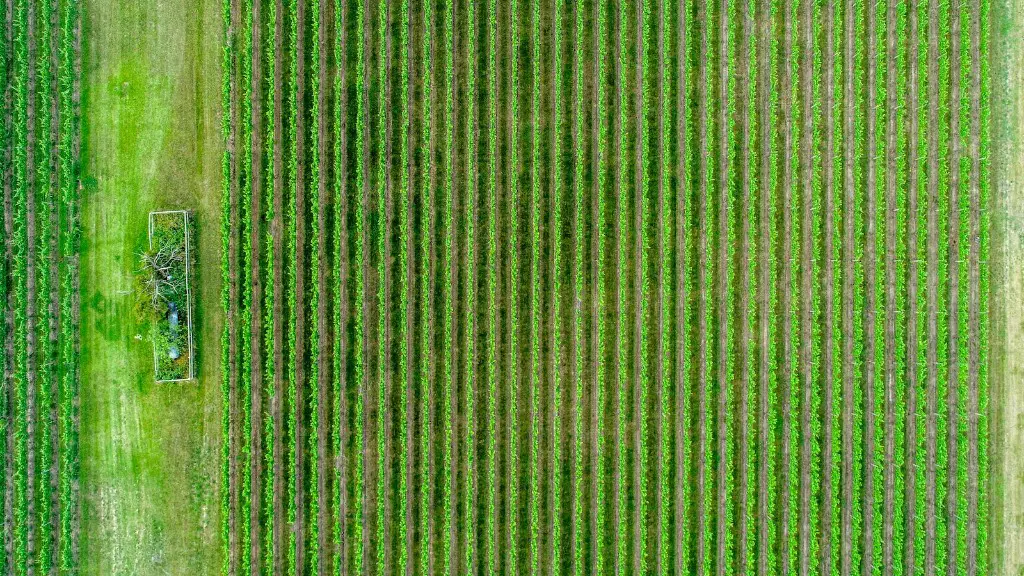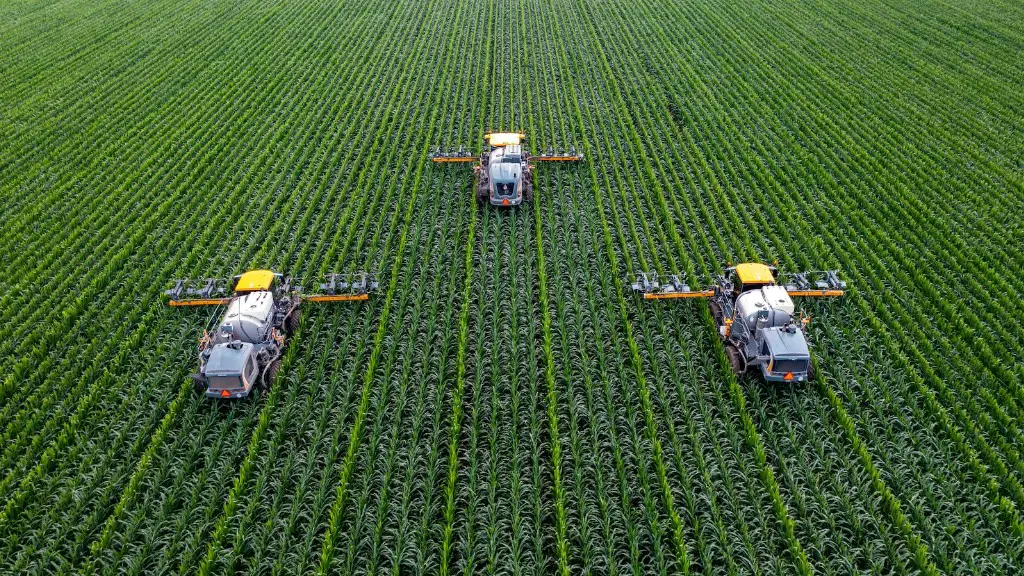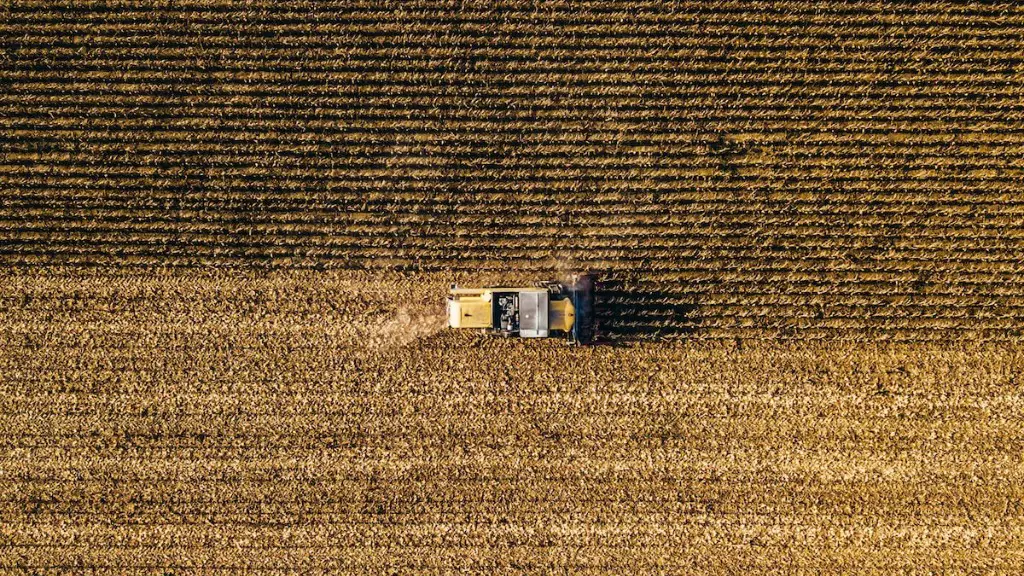The Green Revolution in agriculture was a period in the late twentieth century during which dramatic advances in agricultural technology – including the development and application of new seed varieties, synthetic fertilizers and pesticides, and improved water management techniques – helped accelerate crop production worldwide. This period of intense technological investment in agriculture has had an enduring impact, and is widely credited with having reduced world hunger and revolutionized agricultural production in many countries.
One of the most important advances in agriculture technologies was the development and use of higher-yielding, disease-resistant varieties of cereal grains. These varieties, called HYVs (high-yielding varieties) were developed using a variety of techniques, including traditional plant breeding, biotechnology, and hybridization. These techniques were applied to a number of crops, including wheat, maize and sorghum, and allowed for greater yields to be achieved with less labor and less land.
In addition to developing and applying new seed varieties, the Green Revolution also involved the use of synthetic fertilizers and pesticides. These can help improve soil fertility, making it easier for plants to absorb nutrients from the soil, and can help to control certain pests, both of which can lead to increased crop yields.
Finally, the Green Revolution also included advances in irrigation and water management technologies. These technologies allowed for better control over the availability and use of water, which is essential for healthy crops. Improved water management is especially important in areas where water is scarce, or where rainfall can be unpredictable.
Impact of the Green Revolution in Agriculture
The impact of the Green Revolution on global agriculture has been profound. It is widely credited with significantly increasing crop yields in developing countries and helping to reduce food insecurity and famine. In many countries, agricultural yields have more than doubled since the 1960s, allowing global food production to keep up with the pace of population growth.
However, this increased production is not without its costs. Increased inputs of synthetic fertilizers and pesticides have led to environmental concerns, such as soil and water pollution. There are also concerns about the reliance on monocultural production systems where one crop is grown on a large scale, as these systems can be vulnerable to disease outbreaks and shifts in weather patterns.
In addition, some of the benefits of the Green Revolution have not been shared equally. Small-scale farmers and those living in rural areas often cannot access the inputs needed to take advantage of the new technologies, and those that do often have to bear much of the cost. This has led to increased economic disparities in many countries.
Green Revolution and Plant Genetic Modification
In recent decades, genetic engineering has been used in the effort to further increase crop yields and extend the benefits of the Green Revolution to more regions of the world. By inserting new or modified genes into plants, scientists can create plants with a range of beneficial characteristics. This technology has been used to develop crops that are resistant to certain pests and harsh environmental conditions.
However, as with the advances in technology made during the Green Revolution, the use of genetic modification has its own set of risks. There is still much debate about the potential impacts of GM crops on the environment, as well as potential health risks for those consuming them. These risks, combined with the potential for corporations to control the manual-genetics of the world’s food supply, have led to widespread opposition to GM crops in many countries.
Alternative to the Green Revolution in Agriculture
In recent years, alternative approaches to crop production have been introduced as an alternative to the Green Revolution. These approaches, such as agroecology, focus on sustainability and the use of locally adapted technologies and traditional practices. Many proponents of these approaches argue that they can be more sustainable than current industrial production systems, while still leading to increased yields.
Agroecology also emphasizes the use of diversified farming systems, where multiple crops and animal species are produced on the same plot of land, and organic fertilizers and pest control methods are utilized. This approach can help to reduce environmental and health risks associated with synthetic inputs, as well as reduce farmers’ reliance on expensive chemicals and equipment. By promoting a more holistic approach to farming, agroecology seeks to ensure that crop production benefits the farmer and the environment.
Organic Farming and the Green Revolution
Organic farming has become increasingly popular in recent years as an alternative to conventional farming. Organic farming is based on the use of natural, nutrient-rich inputs and methods, such as crop rotation and integrated pest management, to produce healthy, nutrient-dense food without the use of synthetic fertilizers or pesticides. Organic farming can help to reduce environmental and health risks associated with the use of synthetic inputs, while still allowing for increased yield.
The success of organic farming depends largely on the farmer’s ability to source high-quality inputs and manage their use. Organic farmers also face additional economic challenges due to the costs of sourcing organic inputs, as well as the additional labor required to manage their use. As such, organic farming is not a one-size-fits-all solution, but it can help to reduce the environmental and health risks associated with industrial agricultural production.
Conclusion
The Green Revolution in agriculture was a period of dynamic technological advances in the late twentieth century that substantially increased crop yields and helped to reduce world hunger. Despite this success, the use of synthetic inputs and the focus on monocultures has created environmental and economic concerns. In recent years, alternative approaches have been developed, such as agroecology and organic farming, which seek to address some of these concerns while still promoting increased yields.



